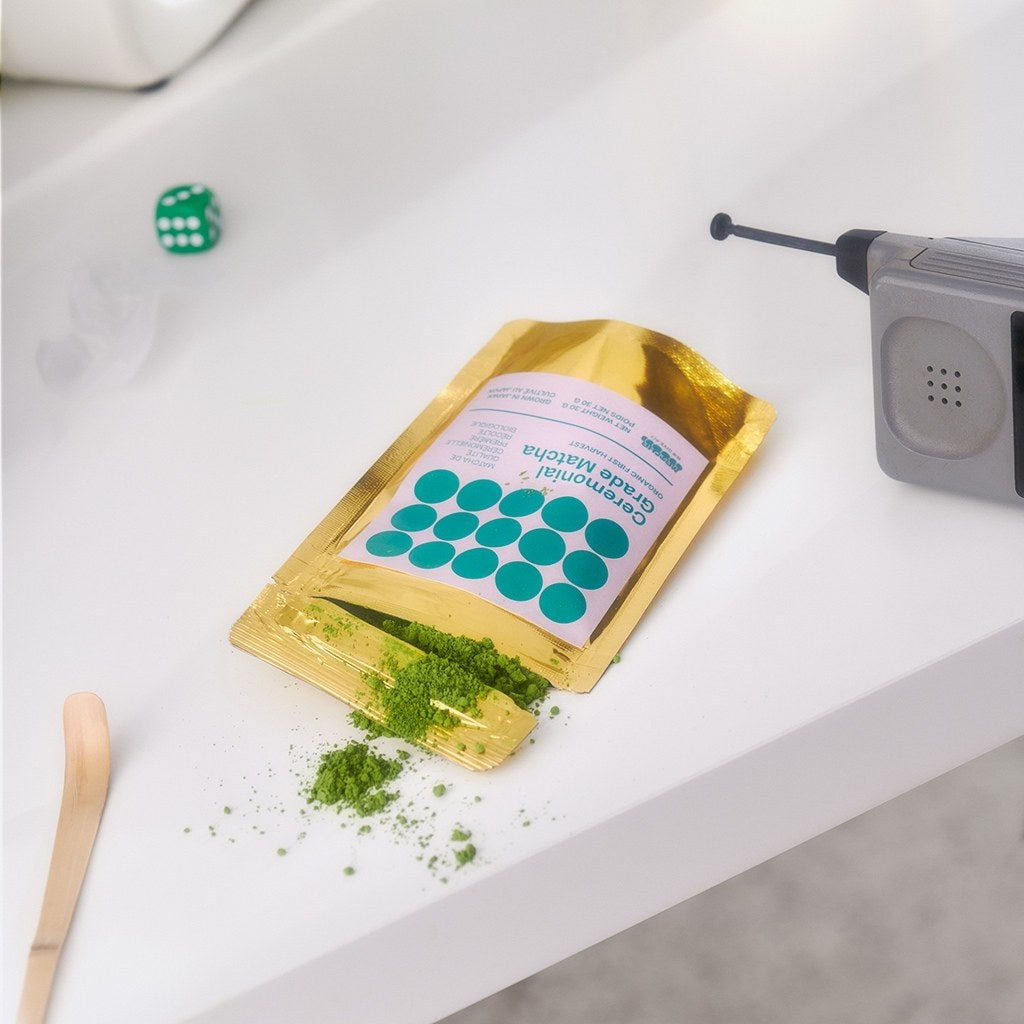
Matcha Quality – What's the Difference?
Sourcing the right matcha can feel daunting, so here's a quick primer to help you decide which matcha's right for you!
There are two main categories of matcha.
Ceremonial
• Shading the plant early increases chlorophyll production, resulting in a stunning and vibrant green colour
• Picking during the first harvest means harvesting the green tea plant after winter, when it has the highest availability of nutrients
• Real ceremonial matcha will have a pleasant taste and a lingering finish like a fine wine
• Ceremonial matcha tastes great alone and with milk or milk alternatives
Culinary
Culinary matcha is typically not shaded as long, and picked during the summer or autumn harvest. The process of procuring culinary matcha is much less time and labor intensive than ceremonial matcha, and it can be purchased cheaply and in bulk.
• Alternative, faster grinding processes produce a larger diameter powder that smears like chalk, appearing blotchy on paper
• Less shading results in less chlorophyll production and a duller brown or yellow colour
• Picking later in the season results in lesser nutrient availability and taste
• Culinary matcha tastes bitter with a high astringency, and is not recommended for drinking
• High quality culinary matcha is generally suitable for baking and cooking purposes
Unfortunately, there are no regulations of the terms ceremonial and culinary here in Canada or in the US, so the best way to tell if you have a high quality ceremonial matcha is to inspect, touch, and taste it. We'd love to hear your experience with various matcha powders and how they stack up against Matcha Dive's!
Leave us a comment below :)


